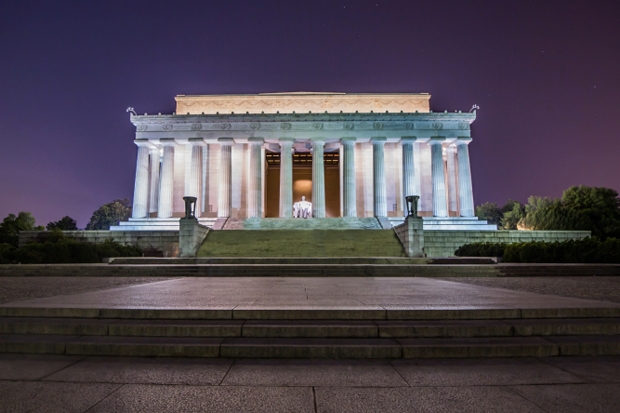In the late 1980s, the parks service in the United States were concerned about the deterioration of the stonework on the Lincoln Memorial. So they asked the maintenance staff why the stone was decaying.
The crew explained that they used high-power sprays every fortnight to clean the masonry. The water penetrated cracks and joins, weakening the stone. But they needed to spray to get rid of the large volume of bird droppings. So they erected bird nets. These scarcely worked, and were unpopular with tourists, so the parks service called in the maintenance workers again and asked, ‘Why are there so many birds?’
‘The birds come to feed on the spiders,’ they said. ‘And the spiders are there to eat the midges.’ After dark, midges covered the memorial. The spiders came to eat the midges, and the birds came to eat the spiders. So the executives tried insecticides. But this also proved ineffective: the bugs came back. So the committee finally asked one more question. Why are there so many midges in the first place?
Because the building is floodlit, they were told.
In the end they tested turning the lights on later in the evening — after sunset, not before — and also turned them off earlier, following a suggestion from Donald Messersmith, an entomologist. On evenings when they tested this approach, midge numbers fell by 85 per cent; everything worked as predicted. Once you had implemented this idea, not only would midges from the Potomac stop splatting against the white stone, but the spiders, birds and bird droppings would be reduced.
It is a wonderful story, and has entered folklore in a philosophy called ‘the five whys’. The idea is that you should always go on asking ‘why’ in order to get to the root cause of a problem rather than the proximate cause. If you do this, what at first appears to be a masonry problem may turn out to be a problem about lighting design and insect behaviour.
The story resurfaced this week in connection with the Germanwings crash. The standard causes of plane crashes, as Steve Coast explained, have been largely eliminated by the imposition of sensible rules or engineering fixes. Windows no longer crack at the corners. Doors no longer blow out. What remains are the oblique, non-obvious problems. ‘As we find more rules to fix more things we are encountering tail events. We fixed all the main reasons aircraft crash a long time ago… So, we are left with the less and less probable events.’ The world’s problems will, in short, get weirder. The seemingly sensible fixes we now add to the rule book will now increasingly run into unintended consequences: you can install impenetrable cockpit doors on the assumption that they will protect pilots from terrorists, only to find that they also prevent the captain (and passengers) from regaining the cockpit.
The solution to this problem is far from obvious. It may be that the perfect approach is oblique, not direct: perhaps you should reinforce half of cockpit doors, and make it impossible for anyone to tell whether or not the door is reinforced? Uncertainty may be a better way to deter wrongdoing than unvarying rules (a lesson bank regulators have just begun to learn).
In any case I suspect the solution to the problem won’t be found in a direct, logical solution, as earlier safety solutions were. It probably doesn’t lie in having cabin crew sit in the vacant seat while the pilot takes a pee (quis custodiet ipsos custodes?). Instead it may be found in a different dimension altogether, as the US parks service discovered. Not that it did them much good: after a few months photographers complained, and they went back to the old regime.
Rory Sutherland is vice-chairman of Ogilvy Group UK.







Comments